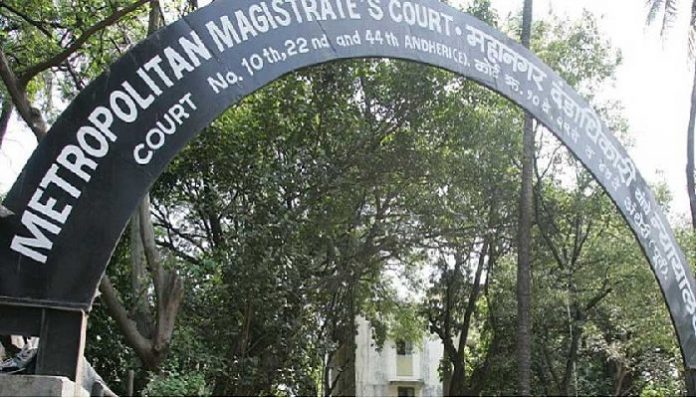This article has been written by Oishika Banerji of Amity Law School, Kolkata. This article provides a detailed analysis as to what makes a Metropolitan Magistrate different from other court officers.
This article has been published by Diva Rai.
Introduction
‘Metropolitan Magistrate’ is a term coined with the help of ‘metropolitan area’ defined under Section 8 of the Code of Criminal Procedure, 1973. According to the said provision, any area in the State comprising a city or town whose population exceeds one million shall be a metropolitan area for the purpose of the Code of 1973. As we have gathered some knowledge about ‘metropolitan area’, we can swiftly move to Section 3 (1), (2) and (3) of the aforementioned Code which gives clarity to the term ‘Magistrate’ used exhaustively in the Code. As per the said provision, any class of magistrate in relation to a metropolitan area will be termed as a ‘Metropolitan Magistrate’. While a ‘Metropolitan Magistrate’ can sink in the skin of a first class Judicial Magistrate, it can very well fit in the dress of a second class Judicial Magistrate as well.
It can also wear the responsibilities of a Chief Judicial Magistrate or a Presidency Magistrate. Thus, a single term can be used in synonymous ways as soon as a ‘metropolitan area’ comes into the picture. This is the speciality of a ‘Metropolitan Magistrate’ and this is what makes it different from other court officers. The present article delves deeper into the concept of ‘Metropolitan Magistrate’ with respect to the Code of Criminal Procedure, 1973.
Metropolitan Magistrate under the Code of Criminal Procedure, 1973
Section 6 of the Code of Criminal Procedure, 1973 classifies criminal courts into four major groups namely:
- Courts of Session;
- Judicial Magistrate of first class/ Metropolitan Magistrate;
- Judicial Magistrate of the second class;
- Executive Magistrate.
Section 19 of the aforementioned Code further clarifies the subordination of the Metropolitan Magistrate. It provides that while the Chief Metropolitan Magistrate and every Additional Metropolitan Magistrate will be subordinate to the Session Judge, every Metropolitan Magistrate will be subordinate to the Chief Metropolitan Magistrate. Although, Section 19(3) vests powers on the Chief Metropolitan Magistrate to regulate the activities of a Metropolitan Magistrate, the former cannot curtail the statutory powers granted to the latter by the Code.
The second-level Courts of Metropolitan Magistrate have been detailed out under Section 16 of the Code of Criminal Procedure, 1973. While Section 16(1) states that the number of courts of Metropolitan Magistrates to be established in every metropolitan area vests on the state government in consultation with the High Court of the respective state, Section 16(2) vests powers of appointing presiding officers of such courts on the High Court of the concerned state. Clause 3 provides that the courts of the Metropolitan Magistrate will exercise its jurisdiction throughout the metropolitan area. While deciding the case of Shah Jethalal Lalji vs Khimji M. Bhujpuria (1974), the Bombay High Court had observed that the jurisdiction of every Metropolitan Magistrate under Section 16 (3) of the 1973 Code, extends to try an offence which is committed at any place within the territory of the metropolitan area.
Section 17 of the aforementioned Code deals with Chief Metropolitan Magistrate and the Additional Chief Metropolitan Magistrate. The High Court is equipped with the responsibility of appointing both the mentioned Metropolitan Magistrates. The Additional Chief Metropolitan Magistrate as provided by Section 17(2) will be empowered with all or any of the powers vested on a Chief Metropolitan Magistrate under the Criminal Procedure Code, 1973 or any other law which is in force as per the High Court’s direction.
Section 18 of the Code of Criminal Procedure, 1973 lays down the provision for Special Metropolitan Magistrates. As the wordings of the provision goes, the High Court is vested with a discretionary power of appointing any person who has held or is holding a government post and the said power can be regulated by the High Court on request by the Central or the State Government as per requirement. While the Special Metropolitan Magistrate is conferred the same powers as any Metropolitan Magistrate, the term of these magistrates is for a period of one year as expressly provided under Section 18(2). As per Section 18(3), a Special Metropolitan Magistrate can also be empowered with the powers of a first class Judicial Magistrate if the State Government or the High Court deems fit.
Powers vested on Metropolitan Magistrates
As we have already discussed previously, a Metropolitan Magistrate can wear on its sleeves, responsibilities alongside powers of all other magistrates with respect to a metropolitan area. The different kinds of powers that a Metropolitan Magistrate can exercise have been elaborately presented hereunder.
Combined powers of first-class and second class Judicial Magistrate
The quantity of punishment that various types of magistrates are permitted to inflict is set forth in Section 29 of the Code of Criminal Procedure, 1973. The first-class Magistrate can only impose a sentence of up to three years. They can, however, try such instances, and if they believe the accused merits a more severe penalty than they can deliver, they can resort to Section 325 of the Code to refer the matter to the Chief Judicial Magistrate (Chief Metropolitan Magistrate with respect to a metropolitan area). This was the observation by the Karnataka High Court in the case of Shivarajveerappa Purad and Another etc. v/s State of Karnataka and Another etc. (1977). It’s also worth noting that the Chief Judicial Magistrate’s powers aren’t transferable to other magistrates who preside over the Children’s Court.
Section 29(4) specifies that while on one hand a Chief Metropolitan Magistrate will be conferred with the powers of a Chief Judicial Magistrate, on the other, a Metropolitan Magistrate will be vested with the powers of a first-class Magistrate. Thus,
- The quantum of punishment that a Chief Metropolitan Magistrate can pass is any sentence except the death sentence, sent for the imprisonment of life and imprisonment exceeding seven years.
- A Metropolitan Magistrate may pass a sentence which:
- In case of imprisonment, should not exceed three years;
- In case of fine, should not exceed ten thousand rupees.
Section 9(5)
The Chief Metropolitan Magistrate steps in the shoes of a Session Judge under Section 9(5) of the Code of 1973 when the office of a Session Judge is vacant. Where the office of the Sessions Judge is vacant, the High Court may make arrangements for the disposal of any urgent application made or pending before such Court of Session by an Additional or Assistant Sessions Judge, or, if there is no Additional or Assistant Sessions Judge, by a Chief Judicial Magistrate, in the sessions division and each such Judge or Magistrate shall have jurisdiction to deal with any such application.
Section 190
Section 190 of the Code of Criminal Procedure, 1973 empowers the Magistrate of the first and second class to take cognizance of the offence which are specified in the said provision. Further, Section 190(2) of the Code vests the power of appointing a Magistrate of the second class to take cognizance of the offences as specified in clause (1) rests solely on the Chief Judicial Magistrate.
Section 192
Making over of cases to subordinate magistrates after taking cognizance of an offence, for the purpose of carrying out inquiry or trial, is another significant power vested on a Chief Judicial Magistrate under Section 192 of the Code of 1973. The requirements of this section are designed to distribute work among magistrates when there is more than one at a location. This section allows matters to be transferred to a subordinate magistrate who is qualified to conduct the investigation or trial. A superior magistrate can withdraw or recall any matter that they have transferred to a subordinate magistrate under Section 410. No notification to the accused is required under this provision. However, under Section 410, the Magistrate is required to keep a record of his reasoning.
Section 260
Section 260(1) of the Code of Criminal Procedure, 1973 vests power to try summarily to any Chief Judicial Magistrate, any Metropolitan Magistrate, and any Magistrate of the first class who is specifically empowered by the High Court. A summary trial indicates a quick conclusion. A summary case is one that can be tried and decided on the spot. The goal of a summary trial is to have a record that is sufficient for the purposes of justice but not so extensive that it stymies case resolution. In general, it will apply to offences that do not carry a sentence of more than two years in prison. It will also apply in circumstances of certain offences listed in sub-sections (ii) to (ix) of clause (1). It is the discretionary power of the Magistrate to try a case summarily depending on the facts of the case.

Section 325
Section 325 of the Code deals with the procedure to be resorted to when a magistrate cannot pass a sentence sufficiently. When a Magistrate with jurisdiction over the offence under trial finds the accused guilty of that offence but believes they are not competent to pass punishment of an appropriate description or sufficiently severe to meet the needs of justice, they must submit the entire proceedings to the Chief Judicial Magistrate, to whom they may be subordinate. Along with the subordinate magistrate’s procedures, the accused must be transferred to the superior magistrate for ultimate disposition.
Section 410
Withdrawal of cases from the Judicial Magistrate by the Chief Judicial Magistrate is provided under Section 410 of the Code. Any Chief Judicial Magistrate may remove any case from, or recall any case that they have entrusted to, any magistrate subordinate to them, and may investigate or try the matter himself, or refer it to any other magistrate competent to investigate or try it.
Judgment by a Metropolitan Magistrate
Section 355 of the Code of Criminal Procedure, 1973 lays down the provision for a judgment delivered by a Metropolitan Magistrate. The items that a Metropolitan Magistrate shall record are:
- The serial number of the case;
- The date of the commission of the offence;
- The name of the complainant (if any);
- The name of the accused person, and his parentage and residence;
- The offence complained of or proved;
- The plea of the accused and his examination (if any);
- The final order;
- The date of such order;
- In all cases in which an appeal lies from the final order either under Section 373 or under sub-section (3) of Section 374, a brief statement of the reasons for the decision.
This section specifies that the Metropolitan Magistrate does not need to write a detailed decision as required by Section 354 of the Code, but simply needs to record the specifics given out in this Section. Clause I, on the other hand, requires the Metropolitan Magistrate to provide a concise description of the grounds for their judgment in all situations where an appeal is pending.
Conclusion
A Metropolitan Magistrate with respect to a metropolitan area functions efficiently under the designation of a Judicial Magistrate of first class, a Judicial Magistrate of second class, and a Chief Judicial Magistrate. While we have a proverb which goes as ‘jack of all trades, master of none’, when it comes to a Metropolitan Magistrate, the proverb can be turned around to be read as, ‘jack of all trades, master of all’.
References
- https://indiankanoon.org/search/?formInput=judicial%20 magistrate%20and%20 metropolitan%20 magistrate pagenum=1.
- https://dakshindia.org/Daksh_Justice_in_India/23_chapter_02.xhtml.
- http://www.mcrhrdi.gov.in/splfc/week3/L%20-%20Structure%20of%20Courts%20-%20Dr.R.Madhavi.pdf.
LawSikho has created a telegram group for exchanging legal knowledge, referrals and various opportunities. You can click on this link and join:
https://t.me/joinchat/L9vr7LmS9pJjYTQ9
Follow us on Instagram and subscribe to our YouTube channel for more amazing legal content.











